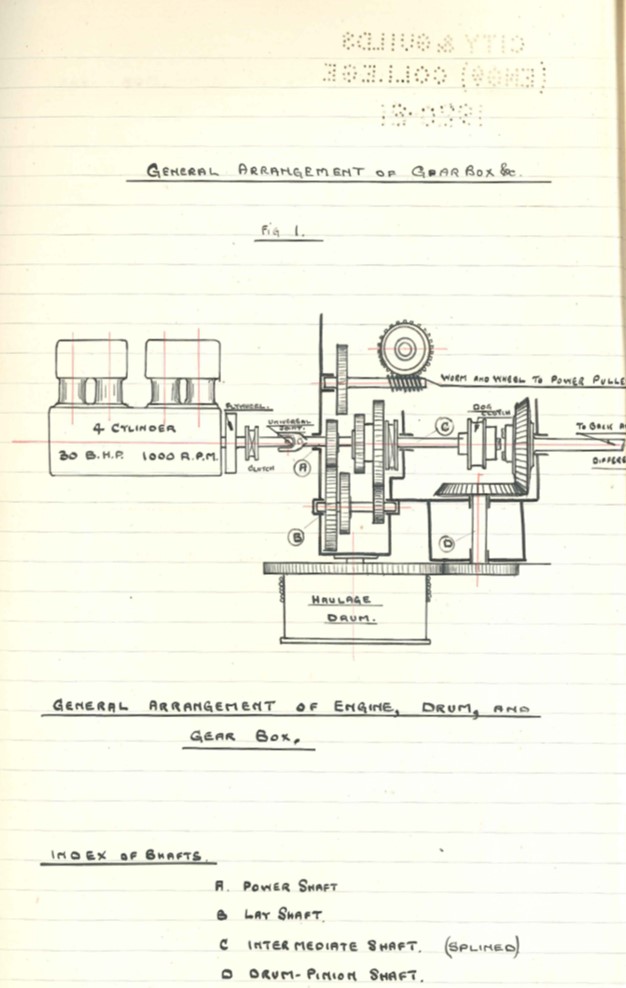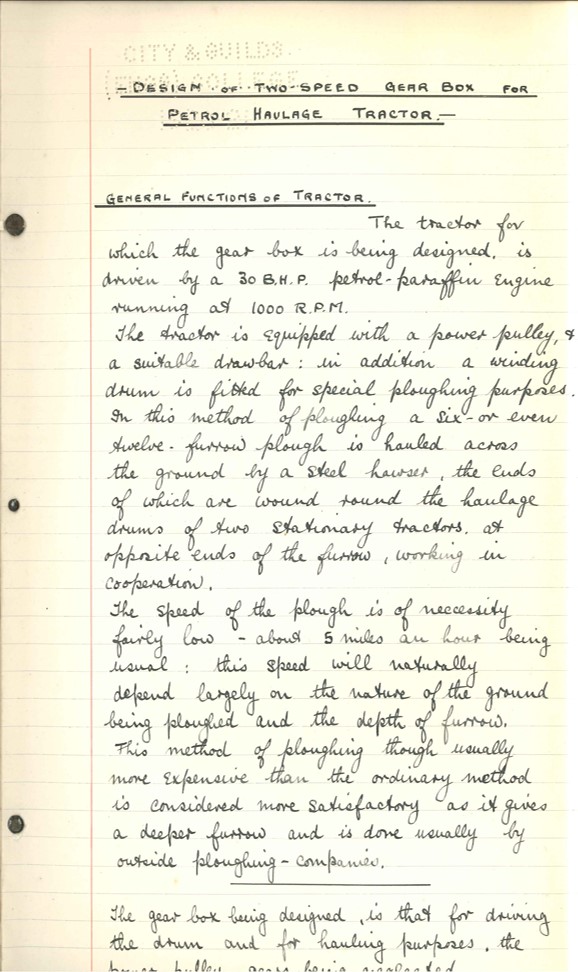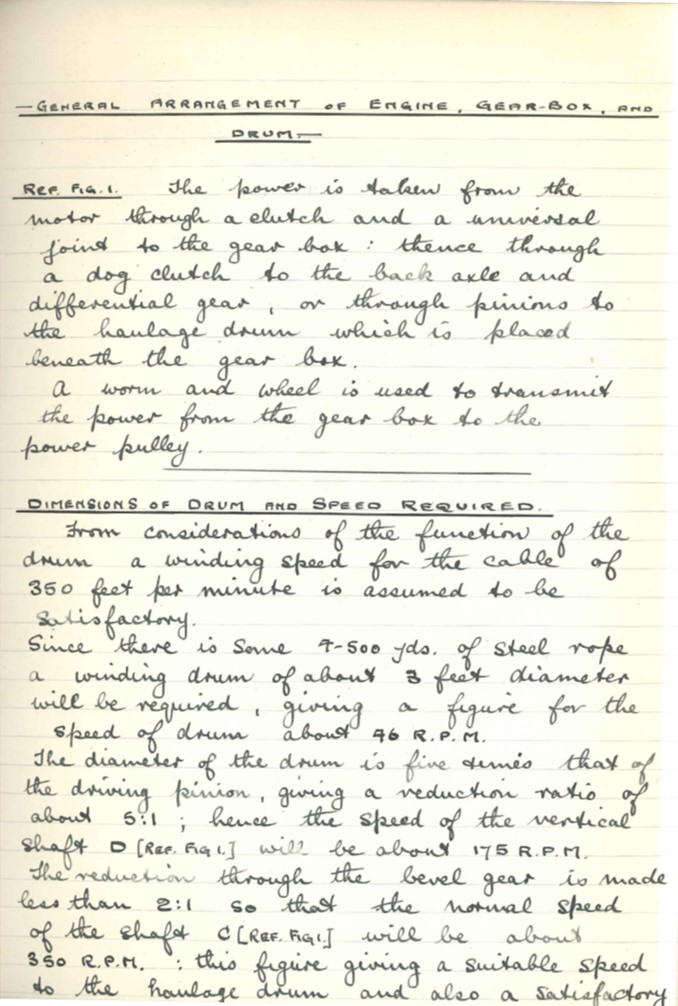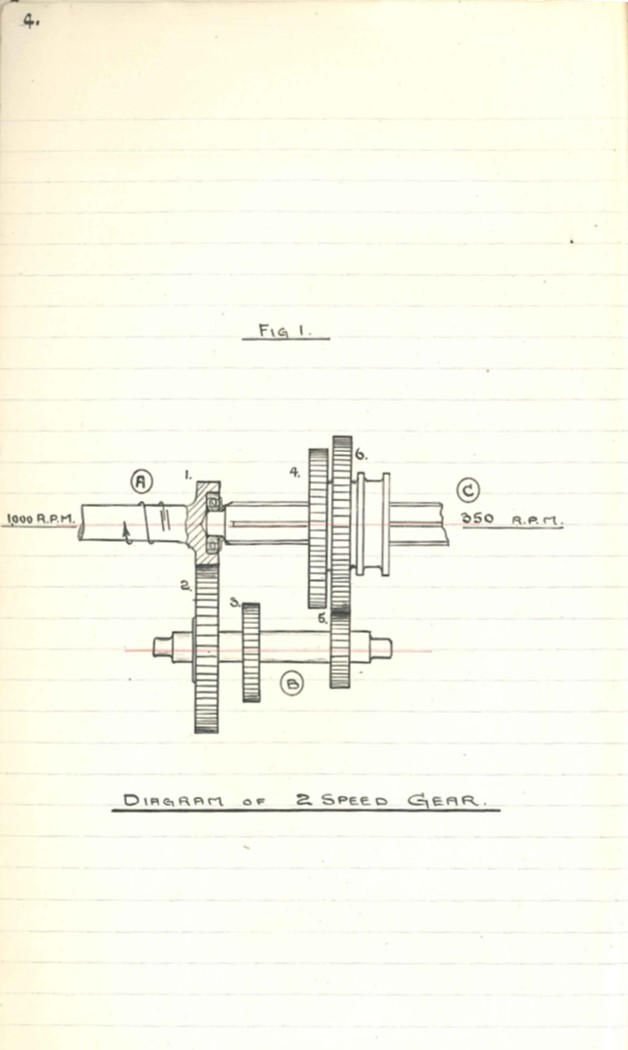I have always known that my grandfather Thomas Clinch was a railway engineer, but I was only recently given some reports from his engineering degree at Imperial College (1921 – 1923). The first thing I noticed about the reports is how beautifully presented they were – everything written in longhand script, with accurate hand-drawn figures (see pictures below) – they really are a relic of a bygone age. But, looking more closely at the contents, I realised that not much has changed in the teaching of mechanical engineering design and analysis in the intervening 97 years.
The projects he undertook during his course were well designed to engage students. How exciting to plan a railway line across Hyde Park, and undertake a land survey in the park! And the tractor gearbox design project introduced new technology developments of that time. I made a quick review of the history of ploughing (not something I expected to be doing this week), and it is clear that Thomas undertook his studies right at the transition between steam ploughing and modern tractor ploughing. Steam ploughing, widely used from the 1860s until the 1920s, used a static steam powered traction engine to pull the plough across the field using a winch and cable. Modern ploughing, where the plough is pulled by a tractor with an internal combustion engine, was not widely used until later in the 1920s. This design project describes a petrol tractor, still pulling the plough using a winch while the tractor remains static. With hindsight, we know that this was a design dead-end; but at that time it must have been seen as a modern development using the new technology of the day.
I am currently busy authoring course materials for one of the Open University’s core engineering modules. Thomas Clinch’s laboratory experiments in beam bending and buckling, as well as his project to design the gearbox of a 2-speed tractor, would fit in well with the materials I’m writing today. He follows the same detailed design and analysis methods that are still used for engineering analysis. So, what has changed in the teaching of mechanical engineering design changed over the last 100 years?
Of course, probably the biggest change is the rapid development of engineering technology – new materials, precision manufacturing, and integration with computers, electronics and sensors. But from a teaching perspective, perhaps the rapid development of computer based tools has been even more important. Specialist software like Computer Aided Design and Finite Element Analysis allow the design of complex products that would have been very difficult to design and analyse using hand calculations alone. More generally, word processors and spreadsheet tools have reduced the need for neat handwriting and hand calculation. But they also bring a risk that students believe that everything can be solved using computer software, and they lose their ‘feel’ for the magnitude of stresses and strains in engineering analysis. Modern engineering design teaching needs to maintain the balance between conventional analysis and computational tools, ensuring that students understand why analytical methods are still relevant to them.
At the Open University, we also need to ensure that distance learning students have the opportunity to participate in hands-on experiments. The residential schools give students excellent hands-on experience through an intensive week of practical work, and we are also introducing experiments in the Open Engineering laboratory (https://learn5.open.ac.uk/course/view.php?id=2) that allow students to undertake practical experiments online, from their own homes.
So, as I continue to write my course materials, I will keep in mind the engineers of the past who had to rely on hand calculation methods, and make sure that computational tools are used to enhance rather than replace the traditional methods. I hope I can also develop activities that will continue to engage students and reinforce their learning. I just wish I could sit down with my grandfather and show him how we design today using 3D CAD and finite element analysis – I think he would have been amazed at the changes, but would probably also have had something wise to share about the old ways too.







Leave a Reply